Best chain lubes for bikes 2025: Wet, dry and all-round lubricants for every condition
We round up the best chain lube for your bike and get to grips with the slippery subject of choosing a wet or dry chain lube
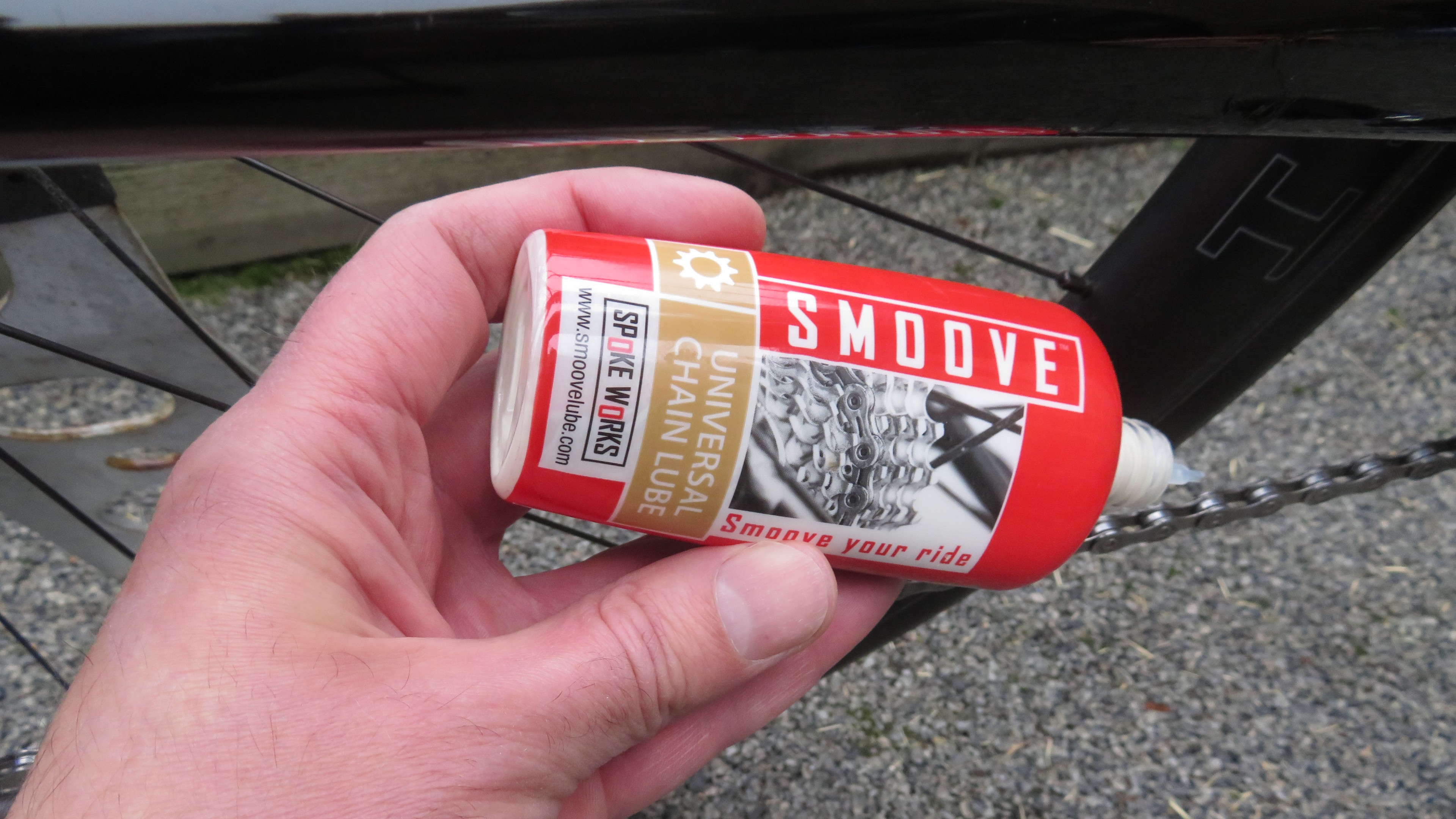
David Motton
Along with a bike-cleaning kit and a little bit of know-how, learning to clean your bike and reapply lubricant to all the moving parts is one of the best ways to save money and increase the longevity of your bike's components. Choose the wrong one, though, and it could do more damage, so hopefully, this guide to the best chain lube for bikes can steer you in the right direction.
Choosing a bike chain lube can be a minefield, with numerous options and no hard-and-fast rule as to which lubricants work best in specific conditions. The easiest way to navigate it is to follow the manufacturer's guidance, using a wet lube for more demanding conditions, such as winter or off-road riding, and a dry lube for warmer, dusty summer days. However, you really need to consider your cleaning habits and the frequency at which you perform this task, as this can significantly impact the approach to lubrication. These drip-based synthetic lubricants feature heavily in this guide as they are affordable, easy to apply and largely do a decent job.
There is a third option, however, which is seeing a revival thanks to new tools and research and that is waxing. If you are not familiar with this process, I recommend reading Rachel's guide on whether to wax your chain first. Even with the new processes available, waxing can be messy, and while Solvent-based wax lubes don't perform as well as dipping wax, they are a step ahead of many synthetic lubes, as we found when testing the Smoove lube, which we rate our best overall. Its easy application, combined with its high performance, really sets it apart from the other synthetic lubricants in this guide.
For tips and tricks, why not take a look at our guide to cleaning your bike?
The Quick List
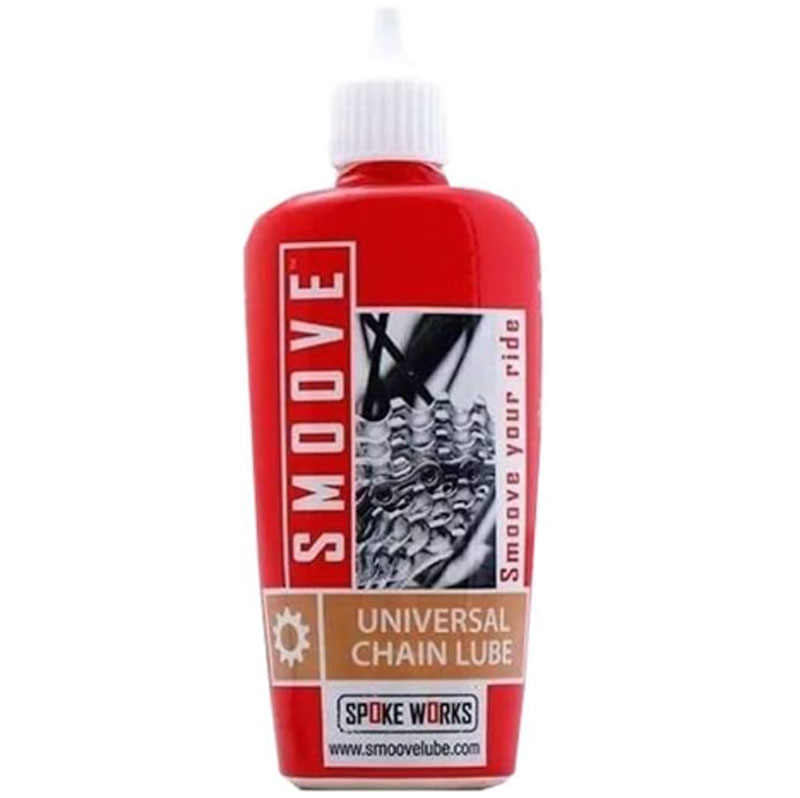
As it is a wax-based product, Smoove Lube does require the chain to be nice and clean before application, but if done correctly, then it works brilliantly. It is quiet, efficient and long-lasting whilst not attracting much dirt either.
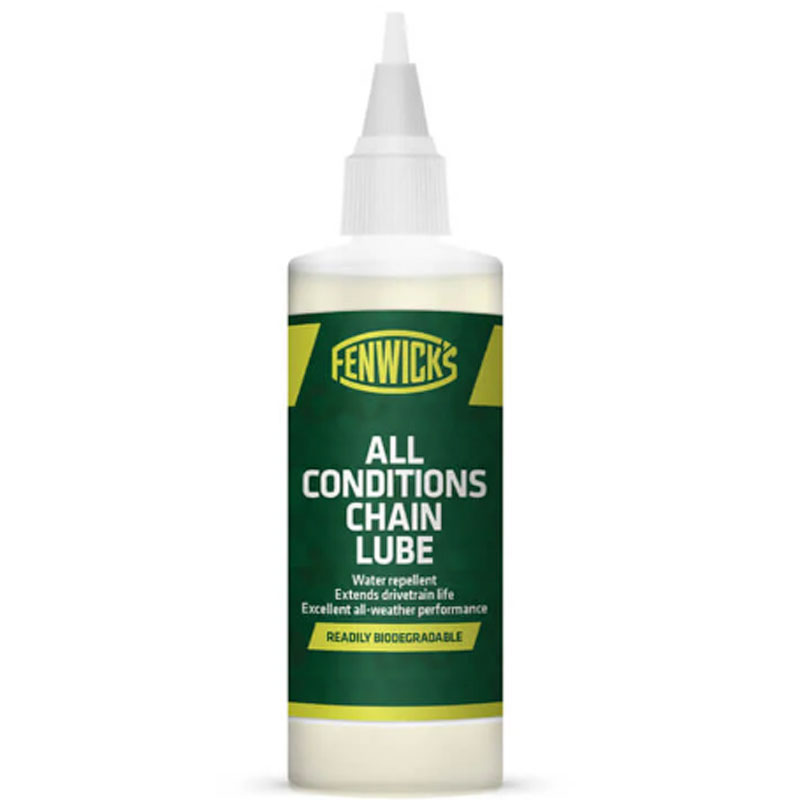
Perhaps the best one-bottle option, Fenwicks All Conditions lube performed well whatever the weather. The slight compromise is that it washes out a little quicker than a wet lube and attracts more dirt than a dry lube, but it still did a good job of protecting our chain.
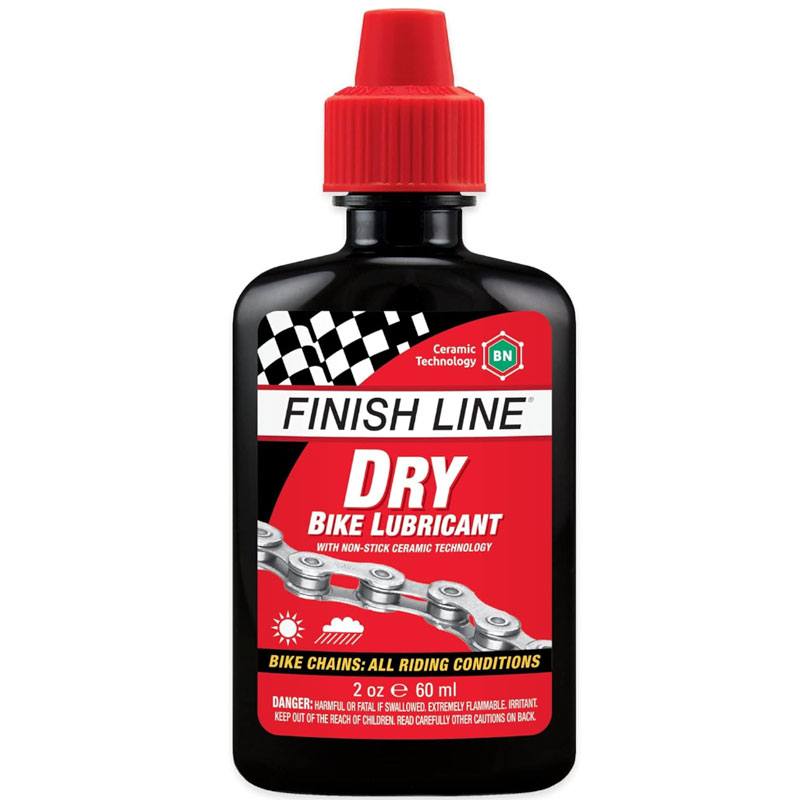
Designed for dry and dusty conditions, the Finish Line lube did a great job. It lasted well and kept the chain looking pretty clean too, but be aware that it does rely on Teflon as a key ingredient and this is quite harmful to the environment.
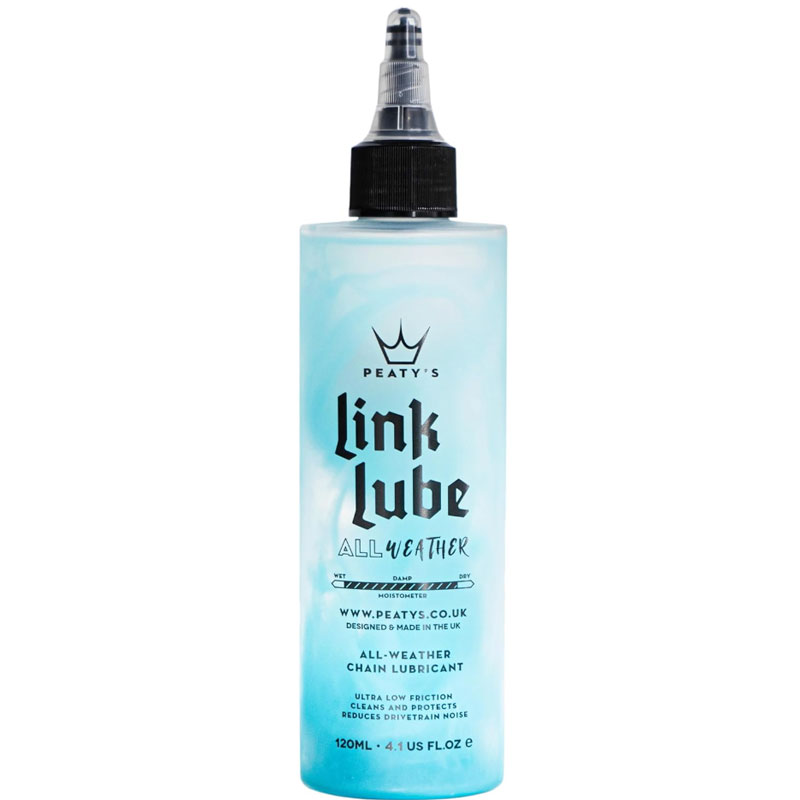
While Linklube struggles when conditions get extreme, for everything in between it is spot on. The two-part formula keeps chains quiet and smooth, without being sticky and attracting debris.
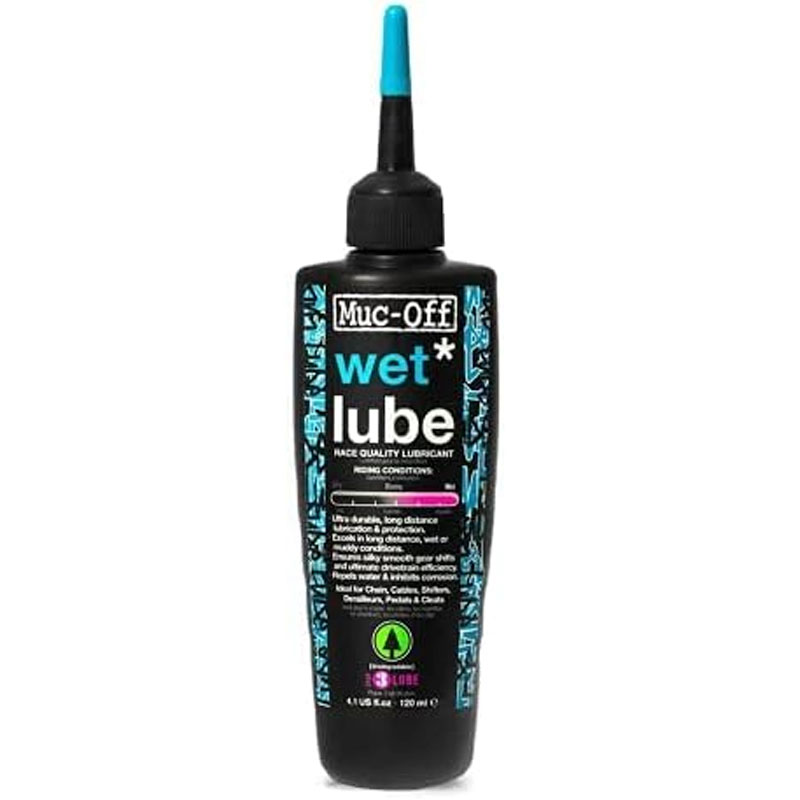
Perfect for winter use or when reapplication might be awkward, Muc-Off's Wet Lube lasted well and prevented noise and rust for extended periods. The trade-off is that it gets quite dirty, but on the plus side, it is biodegradable.
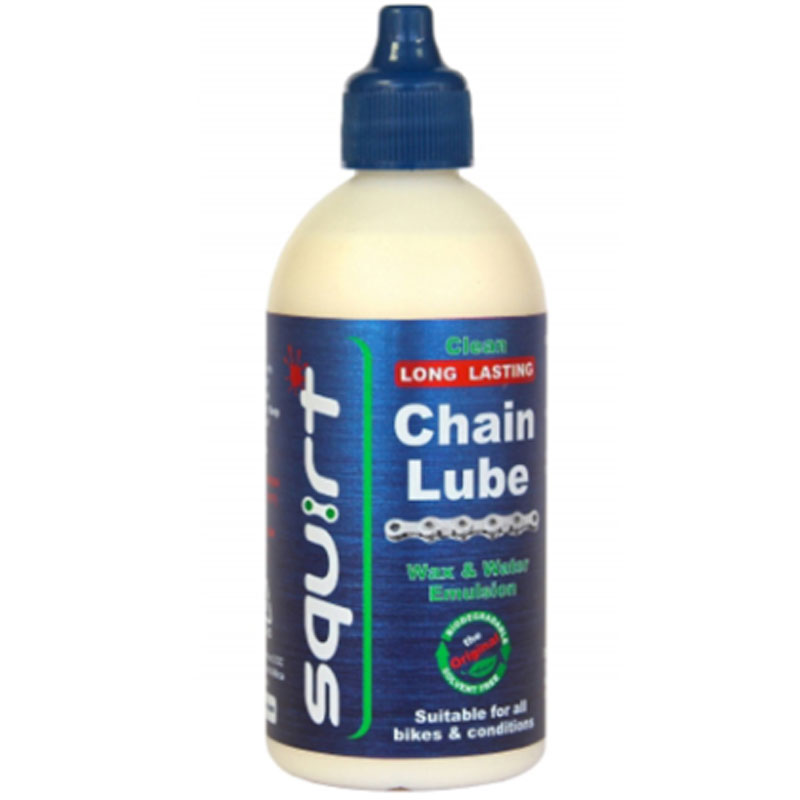
Extremely clean, efficient and quiet, Squirt's wax-based lube is fantastic in the right conditions. Filthy weather or gritty trails can strip it off quite quickly though and it does take a little more effort to apply properly than oilier alternatives.
The best chain lubes for bicycles - all tested and rated
Best overall
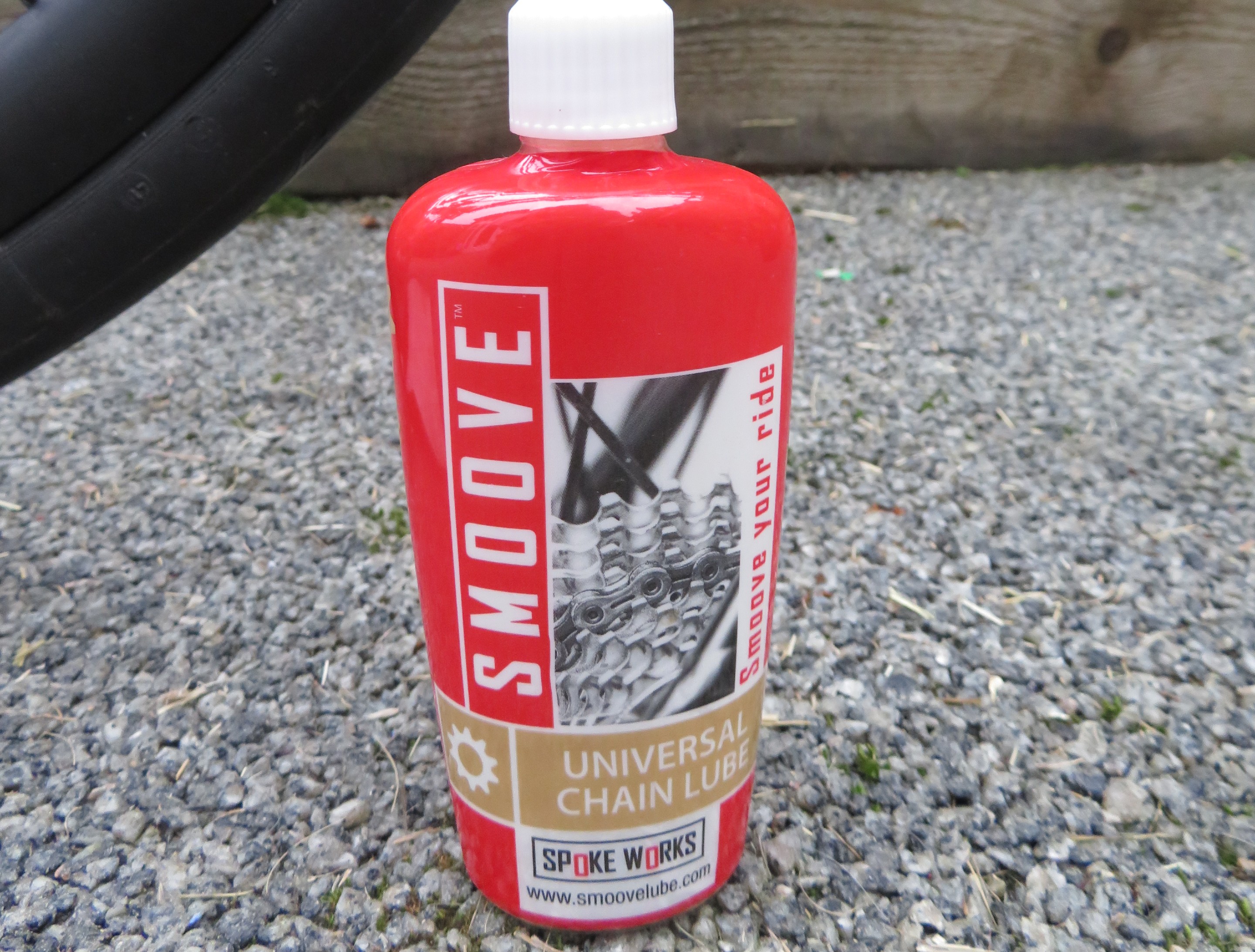
Smoove's chain lube is the 'best on test' thanks to its longevity
Specifications
Reasons to buy
Reasons to avoid
Developed to be used in the Absa Cape Epic MTB stage race that runs in South Africa, a race that is notoriously hard on drivetrain and suspension components, Smoove proved to be so long-lasting that it was dripped onto the chains of the majority of the top ten teams the year it was launched. It takes a little bit of chain prep before the first application, but when done correctly the wax-based lube will last for an extraordinary number of miles.
During testing, we found that the extra effort required in the application stage paid dividends when it was time to ride. After 150 miles in varied conditions, including some rain, the chain still ran smoothly and was noise-free. This means that despite Smoove Lube's higher price tag it still represents decent value for money due to the longevity of each application.
- Read our full Smoove lube review
Best for wet conditions
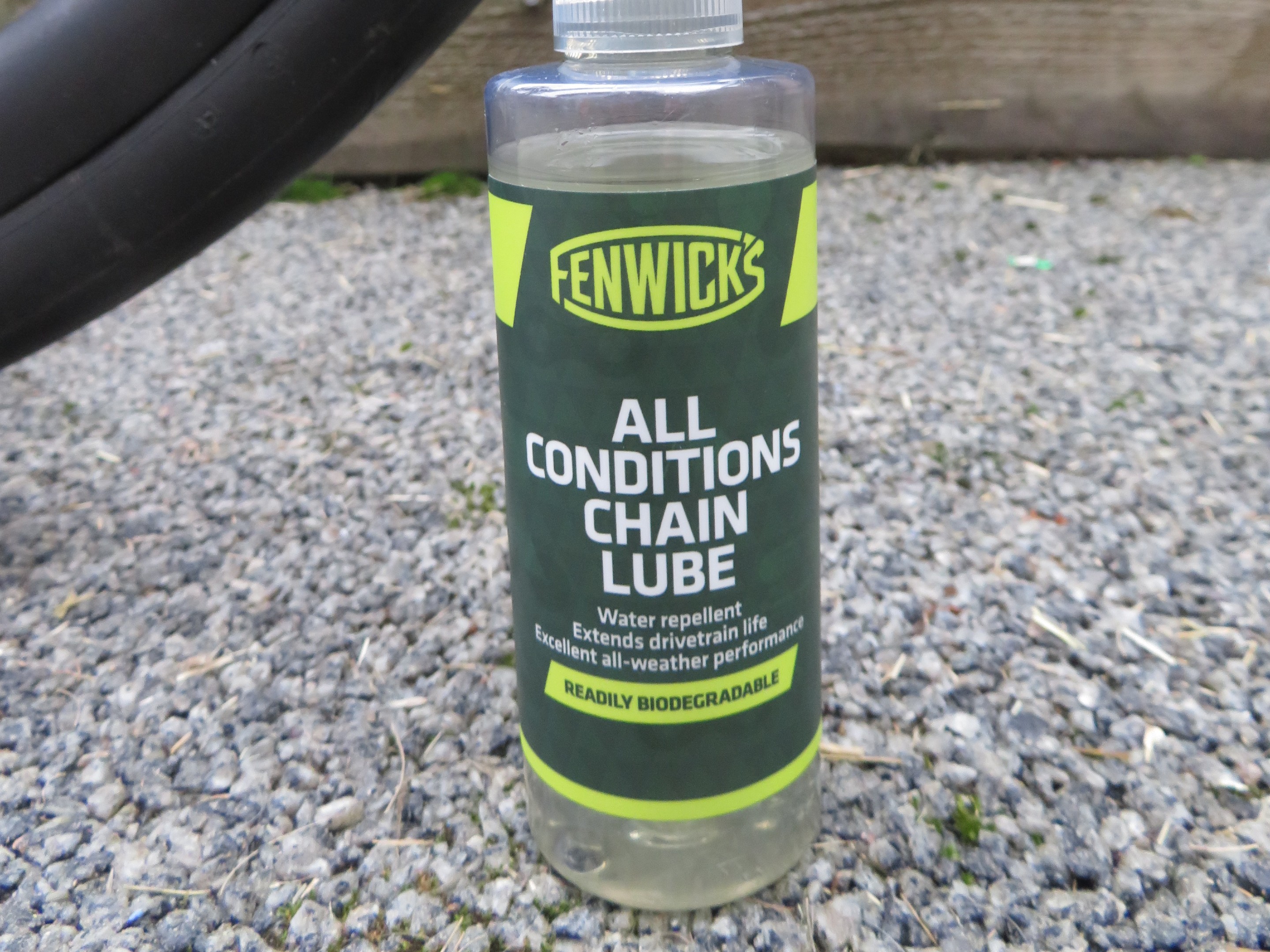
Fenwicks All Conditions chain lube performs across wet and dry conditions
Specifications
Reasons to buy
Reasons to avoid
Fenwicks looks to marry the advantages of wet and dry lubes with its All Condition formulation. It's a bit lighter than many wet lubes, so it soaks into the chain quickly and doesn't become claggy or collect dirt, doesn't wash off in the rain, but is still easy to clean your chain.
It's also biodegradable and comes in a bottle made from recycled plastic, so its environmental credentials are first rate too.
We tested the lube in a range of weather conditions. We were impressed with how little dirt the lube picked up, even after a gravel ride. It also handled the rain well, during both the simulated 'garden hose' test and out in the real world, leaving our chain rust-free and running smoothly, even after 100 winter miles.
- Read our full Fenwicks All Condition lube review
Best lube for dry and dusty conditions
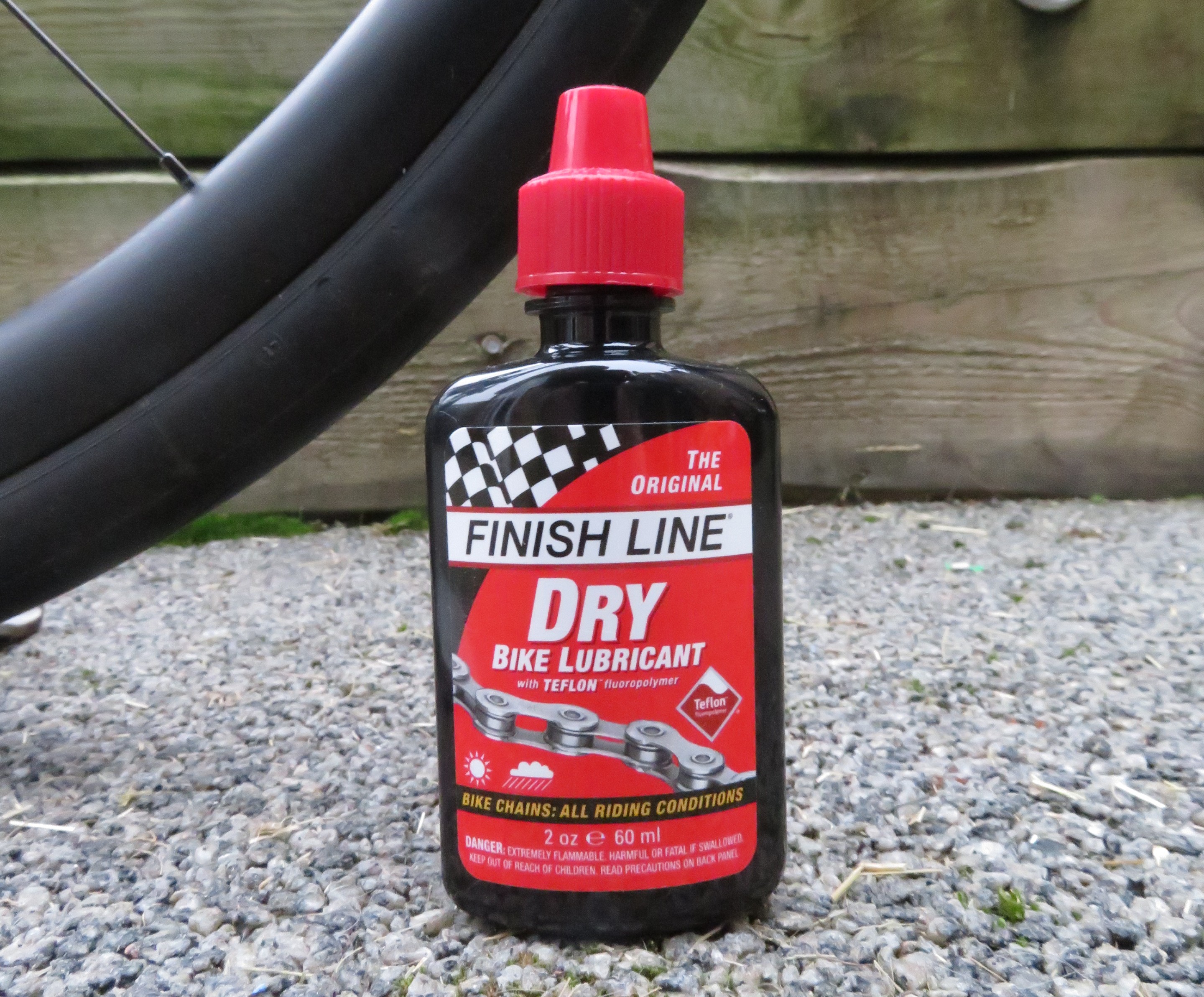
Finish Line's Dry Bike Lube sheds dirt efficiently
Specifications
Reasons to buy
Reasons to avoid
Finish Line's dry lube is very effective at repelling dirt, making it a good choice for dry and dusty riding. Teflon is used in this dry lube to reduce friction and mechanical wear as it penetrates all the nooks and crannies for complete protection. The downside to Teflon is that it's harmful to the environment, even though it's used here in very small doses.
In dry conditions, the lube worked well. Our chain stayed very clean, with the Teflon seeming to work just as well as it does in frying pans. Finish Line says that the 60ml bottle should be good for around 100 miles. We'd say this seems pretty accurate, though if used in wet conditions it will last less than this.
- Read our full Finish Line Teflon Plus Dry Lube review
Best lube for gravel
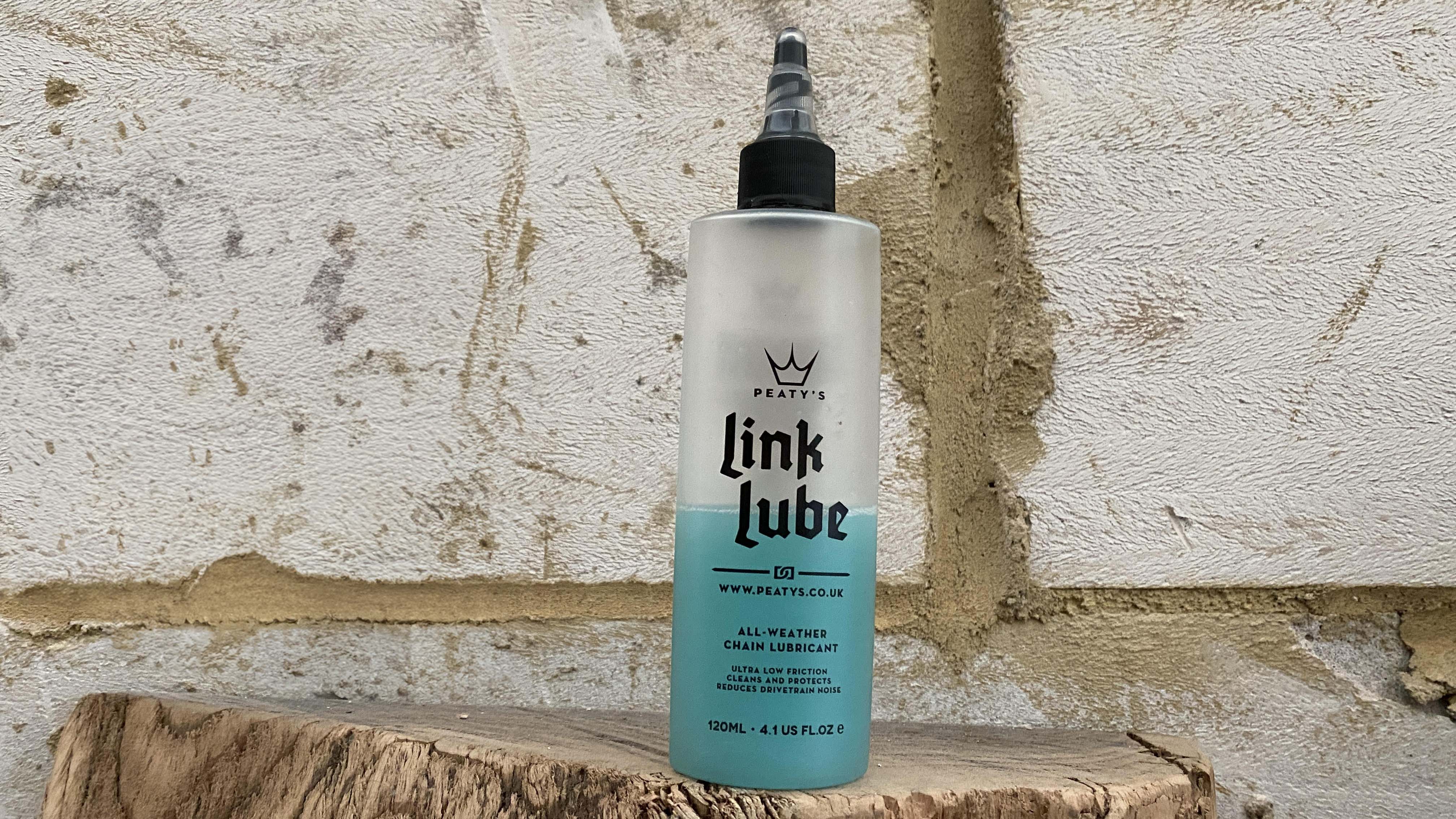
Using a two part formula, Peaty's link lube needs to be shaken before use
4. Peaty's Linklube All-Weather
Our expert review:
Specifications
Reasons to buy
Reasons to avoid
I have been using Peaty's Linklube all-weather for at least three years, and really, I can't fault it. Its unique formula, which requires shaking before use, blends a clear part that contains the water dispersant, anti-corrosive, and penetration fluid, with the blue part, which contains a mix of oils and waxes that penetrate deep into your chain rollers and keep them running smoothly.
Peaty's Linklube is branded as a lubricant that cleans and is designed to dislodge dirt, muck, and grime from your chain links. I couldn't confirm whether this was true, but even after a deep clean, the chain tends to go black and look dirty after use. I have no issues with this, as my chains all run smoothly, quietly, and rarely seem to attract any additional dirt.
I would say the limits of Linklube stop at the extremes, so if it is particularly dry and dusty, or you are bog snorkelling, it lacks the durability that a dedicated wet or dry lube would have in those conditions.
While Linklube All-weather is more expensive than Muc-off and Fenwick's options, I find the applicator bottle much easier to use. It doesn't leak, and it allows for much more control. Peaty's now offers large 360ml refill pouches, making the bottle reusable as well.
Most durable
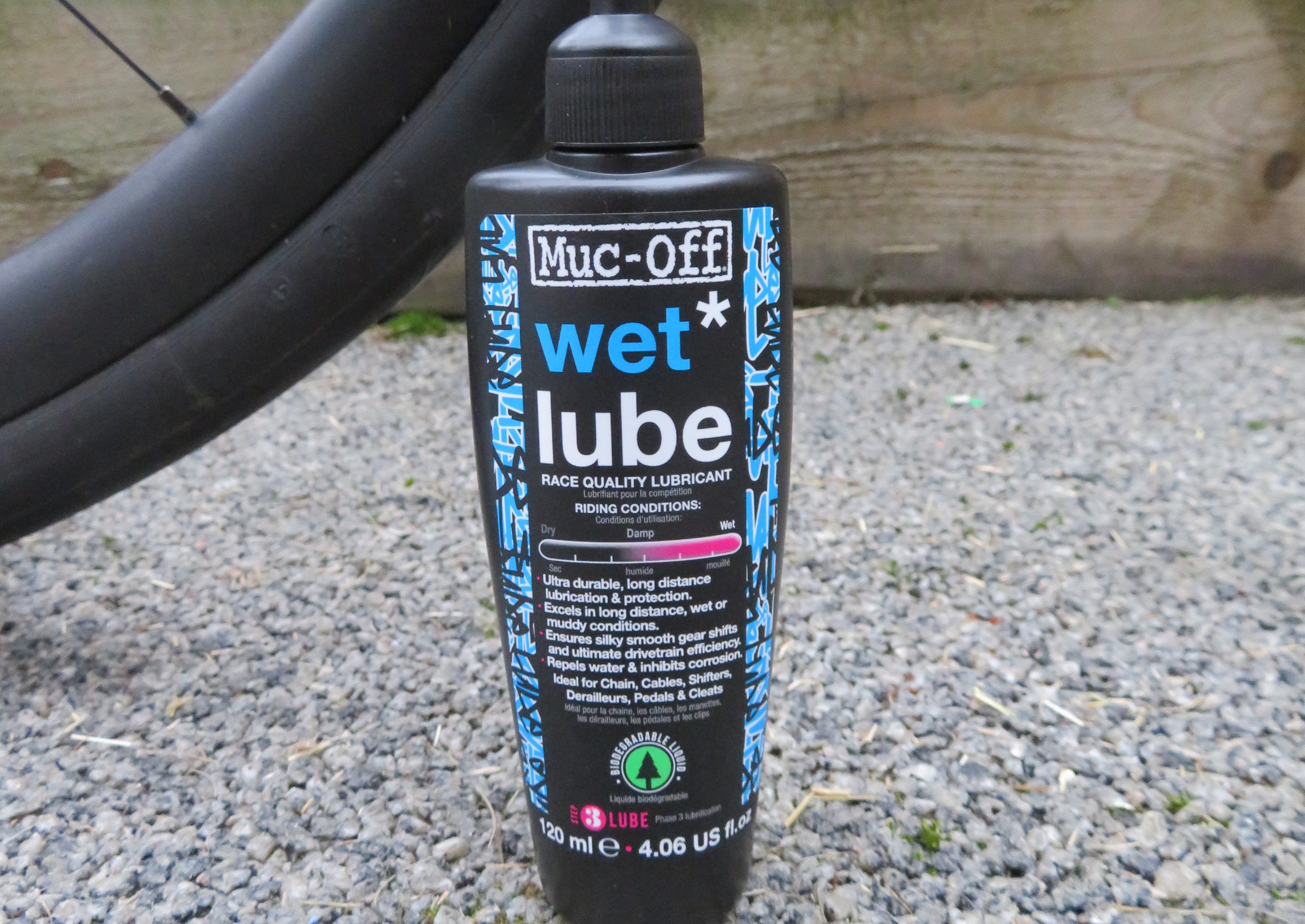
Muc-Off's Wet Lube is biodegradable and easy to apply
Specifications
Reasons to buy
Reasons to avoid
Muc-Off's wet lube formula contains no harmful acids, CFCs or solvents, as well as being biodegradable. It features the company's integral Extreme Pressure Additives coat for increased efficiency in the drive chain.
On test, the lube kept our chain quiet and smooth, although it did attract a bit of dirt and grime. In wet conditions, both real and simulated, the chain remained rust-free. It's also long-lasting; we'd say that you should be able to ride 100 miles+ between applications.
- Read our full Muc-Off Wet Lube review
Best lube for road cycling

Squirt's waxy Chain Lube lasts longer than many oil based alternatives
Specifications
Reasons to buy
Reasons to avoid
Squirt's Chain Lube is a wax and water-based lubricant that is noticeably drier and cleaner than most oil-based options. Ideally, it should be applied to a sparkling clean chain and then left for a while to penetrate fully before use, so no last-minute applications before diving out the door on a Sunday morning.
When conditions are reasonably dry then it lasts very well and I have used it without issue on road, gravel and mountain bike drivetrains, but I confess that my chains do get very regularly cleaned. If you prefer to layer on lube after lube without recourse to a brush and cleaner, then perhaps look elsewhere.
As it isn't as sticky as oily lubes, dust doesn't get attracted to it which has to help chain and cassette longevity but very wet or gritty conditions can strip it off fairly quickly. If I know I am in for a long day in the saddle (or multiple days back to back) then I will use something heavier, but for everything else, I like Squirt a lot.
- Read our full Squirt Chain Lube review
Honourable Mention

A one stop shop for cleaning and waxing
Chain waxing isn't for everyone, as it can be time-consuming and messy. However, the results are a clean chain, proven to last significantly longer than one lubricated by synthetic and oil-based lubes. Cycling Weekly contributor Andy Turner recently presented the case that waxing your chain is a far more cost-effective and faster option than upgrading your bike or frame, in his piece, "Can a waxed chain really make you faster?"
It is certainly becoming easier and more affordable; that is why we honourably mention the Silca Ultimate Wax System, which now offers a straightforward process for degreasing and waxing. The system houses its own heating element, keeping everything together in one crockpot and minimising mess. You can literally dip and hang. Given that it is also not an outrageous price, like so many modern bicycle innovations, it is worth considering.
Specifications table
Model | Bottle size | Best use | Type |
Smoove Universal Chain Lube | 125ml/4.22oz | Dry and dusty | Wax-based lube |
Fenwicks All Conditions | 100ml/3.3oz | Wet and dry conditions | Wet lube |
Muc-Off Wet Lube | 120ml/4oz | Wet conditions | Wet lube |
Finish Line Dry Lube | 60ml/2oz | Dry and dusty conditions | Dry lube |
Peaty's Linklube All-Weather | 120ml/4oz | All conditions | Oil based |
Squirt Chain Lube | 120ml/4oz | Dry and dusty conditions | Wax-based lube |
Meet the tester
David is a freelance journalist and presenter, specialising in motoring and cycling. David has reported and written for some of the most prestigious publications not just in cycling, including The Sunday Times and The Telegraph.
How we test
All the chain lubes featured have been tested in real-world conditions. This means that the tester has used the products across a range of conditions to assess their performance, taking into consideration the different demands placed on individual types of lubricants. We take note of a range of factors, including ease of application, longevity, and cost, as well as noise, any appearance of rust, or damage.
All of the lubes featured have been applied to a chain cleaned in an ultrasonic bath. As part of the testing, our reviewer also performed a test designed to best simulate riding in the rain in an attempt to eliminate variables.
After applying the lube, the reviewer soaked the chain with water from a garden hose and left it for 30 minutes before riding. This riding was then done on a repeatable route, including steep climbs and plenty of gear-shifting, to determine the smoothest and quietest performer.
How to choose the best bike chain lube
Studies have shown that the type of lube itself makes little difference to the efficiency of a clean chain, although we've looked at whether swapping your chain lube can make you faster.
So if the type of lube is unimportant for efficiency, why is there so much choice? Alex Trimnell, Muc-Off’s CEO, has this advice: “Keeping your drivetrain clean and well-lubed is important for a smooth riding experience, but you need to make sure that you use the right lube for the conditions.”
But a glance in your local bike shop will reveal a vast range of lubes to choose from. Wet, dry, wax and ceramic are just a few of the different types on offer. So which lube should you choose?
Despite the seemingly endless differences, chain lube can be categorised into just two simple types: wet and dry.

Simon Nash of Green Oil, which makes environmentally friendly lubes, explains: “Wet lube was the original lubricant of choice. Early brands used something like car engine oil. Its consistency trumped basic spray lubricants that were primarily designed to displace water.
"It worked and was durable. But many cyclists on the road racing scene took to waxing chains in a frying pan. Secret formulas mixed in the kitchen often led to chains being dipped in bespoke waxy lubricants overnight.
"Companies soon realised that instead of heating up wax to melt onto a chain, wax could be melted (or rather dissolved) in a solvent. When this is applied, the solvent evaporates, leaving just the wax, or ‘dry’ lubricant.”
Going back to Trimnell’s advice, choosing the best lube solution comes down to the conditions you ride in.
Wet lubes are suitable for use in all weather conditions, but they really come to the fore when riding in autumn and winter, as they are water-resistant, so they won’t get washed off while riding through puddles or in a rainstorm.
Most wet lubes will provide efficient lubrication for over 100 miles of riding with one application. If you ride in the winter months, a wet lube will resist salt corrosion. Wet lubes are also really good at reducing drivetrain noise.
The downside is that the sticky nature of wet oil can attract dirt, which, if left to build up, can act as a grinding paste to wear out components rapidly. It also oxidises and if left to build up, ends up as thick black gunk. Using wet lube properly requires regular degreasing and cleaning of your drivetrain.
In dry, spring and summer conditions, you want to use a lighter lubricant, usually a wax-based ‘dry’ lube. Dry lubes are much cleaner to use and attract less dirt build-up, even with repeated applications. This makes them much better in dry or dusty conditions, especially off-road or on gravel.
However, even a light rain shower will wash dry lube off the chain, and it is less durable; an 80-mile ride in dry conditions can drastically reduce lubrication.
As Nash also points out: “Value is an issue — in a bottle of wet lube, 100% of the formula will lubricate. In a dry lube, some of the formula is solvent, which is there to aid application.”
Whichever lube you prefer to use, for optimal results, Trimnell suggests leaving the lube on the chain overnight before riding for maximum benefit.
What the experts have to say...
My view: Andy Verrall former service course manager, One Pro Cycling
A wet lube from the team's supplier, Juice Lubes, is my default choice year-round. I prefer to have a lube on the drivetrain to cover all weather.
The most important thing for me is daily cleaning of the drivetrain with degreaser, thoroughly drying it to remove all moisture before reapplying more lube.
This way the drivetrain is far more efficient and you gain extra life out of the whole system, along with no loss of power from the rider.
My view: Simon Nash, Green Oil founder
Every bike cupboard should have both a wet and dry lube. Dry lubes are for the driest conditions and cleanest chains.
Wet lubes can be used all year, offer better value and have the greatest longevity. Whether wet or dry, it’s often a question of how much time and effort you want to put in.
Either way, make sure you use a lubricant — your chain will thank you for it!
FAQs about chain lube
How often do I need to apply chain lube?
How often you need to lube your chain depends on how frequently you ride your bike and the conditions in which you ride it.
If you need to clean your bike or your chain after a ride, you should end up by drying the chain and reapplying lube, to prevent your chain from rusting. Likewise, a ride in wet conditions will usually require reapplication to keep your chain sparkly.
In summer conditions, there can be benefits in applying a dry lube less frequently, as this will prevent the build-up of grime on your chain, which can speed up wear.
How do I apply chain lube?
You should always apply fresh lubricant to a clean chain, never a dirty one. So, if you haven't already go clean your chain.
I prefer the individual link method, it takes a little longer but ensures a more even application and minimises waste and cleanup. Place a piece of tape or a pen mark on the link you start at and make sure to apply it to the side of your chain that runs over your chainring and cassette, not on top of your chain. At this point slowly apply a very small drop of lube to each individual link until every link has been lubricated.
Leave to dry, Ideally overnight but at least an hour or so before wiping away any excess with a rag, some manufacturer's instructions are quite specific so make sure that you follow their guidance.
What’s the difference between wax and oil lube?
Drip Wax lubes are predominantly made of wax, but have a small amount of carrier solvent to help the wax to penetrate into the chain. The wax forms a dry film which lubricates the chain and is less likely to attract grime.
In contrast, synthetic lubes are made of oils and other materials. The oil penetrates the chain links and does not dry. They almost certainly will attract more grime than wax-based lubricants.
Why can’t I just use regular WD40?
WD40, GT85 or equivalent are effective at displacing moisture from your chain, so they can be useful to help stop it from rusting after you've cleaned it. But they won't help to reduce friction and wear in the drivetrain, they're easily washed off and they attract dirt. They're not as effective as a chain lube at reducing friction either.

What's the biggest mistake you can make with chain lube?
The first is not cleaning your chain thoroughly enough before applying new lubricant, reapplying it, or doing it regularly enough. If your chain is not clean, the lubricant becomes ineffective, sapping watts, increasing wear and generally a waste of your time. Regardless of your experience with bikes or cleaning, you can do a lot worse than invest in a good chain cleaner or ultrasonic bath.
The second, which might seem minor, but we have all done it, is to apply the lube just before you ride. The best bike chain lubes need time to penetrate the chain's rollers and links. Ideally, you would be organised and have your bike cleaned and relubbed immediately after every ride, but we all know that post-ride feeling of just wanting a snack and a sit-down. So, at the very least, the night before or a few hours will do.
What chain lube do the pros use?
Given that most Pros' bikes are now maintained for them, the mechanics are likely using sponsor-provided equipment. For example, Ef Education-EasyPost is sponsored by Muc-Off, so it is very likely they will have to use their products. You also have to remember that Pros' bikes are attended to nearly every race day, and as large blocks of their training will be done on camps and at altitude, they will have mechanics on hand regularly.
That is not to say that those mechanics don't have some tricks up their sleeves, but given the frequency of the maintenance and regularity with which new chains are fitted, what the pros use does not translate to everyday use.
If you are looking for the fastest, the most cost-effective option, or in-depth knowledge and testing on chain wear and lubrication, you can not go wrong with a visit to the Zero Friction Cycling page.
The latest race content, interviews, features, reviews and expert buying guides, direct to your inbox!
Like many, Matt began his bicycle industry journey on the spanners at his local bike shop. After spending his youth mountain biking, he was inspired to embrace gravel during his tenure with Evans Cycles' in-house brands, Pinnacle and Hoy Bikes. Recognising the evolving industry, Matt eagerly seized the chance to become an E-bike designer, winning several awards with the E-bike brand Cairn Cycles.
These days, Matt is likely to have a toddler sitting shotgun or off the beaten track somewhere on the South Downs.